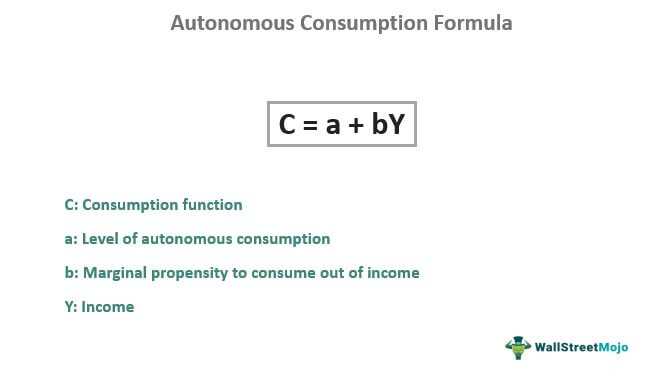Autonomous consumption is an important concept to understand in the realm of personal finance. It refers to the basic level of consumption that must occur in an economy, even if no income is generated. It is an important factor to consider when looking at economic growth, as it can help to explain why certain sectors of the economy remain resilient during times of economic hardship. In this article, we will explore the definition of autonomous consumption and its implications for the economy.
Understanding Autonomous Consumption: Key Concepts and Terminology

Autonomous consumption is a key concept in economics that deals with the spending of money on goods and services without any changes in income. It is the level of consumption that occurs in the absence of any changes to disposable income. Autonomous consumption is important to understand because it helps economists to measure overall economic activity and how it might be impacted by certain economic indicators like changes in income, taxes, or interest rates. Autonomous consumption can also be used to measure the impact of certain policies or changes in the economic environment on consumer spending patterns. Understanding autonomous consumption can give you a better understanding of how the economy and consumer spending works, and can help you make more informed economic decisions.
Analyzing Autonomous Consumption: How It Affects GDP

Analyzing autonomous consumption is an important part of understanding how it affects GDP. Autonomous consumption refers to the buying of goods and services that are not dependent on the level of income. This means that even if income levels decrease, people will still continue to purchase these goods and services, which can help to stabilize the economy. Autonomous consumption is an important part of a country’s GDP, as it helps to ensure that there is a steady stream of income into the economy. By understanding how autonomous consumption works, it is possible to better understand the economic health of a country and how it can be improved. It is also possible to use this information to create economic policies that help to ensure that the country’s GDP continues to remain strong. Autonomous consumption is a key part of understanding the economic health of a nation and can help to ensure that it remains stable and prosperous.
The Relationship Between Autonomous Consumption and Disposable Income

Autonomous Consumption and Disposable Income are closely related concepts in the world of personal finance. Knowing the difference between the two can help you better manage your finances. Autonomous Consumption is the amount of money that is spent on goods and services regardless of the level of disposable income. This type of spending is not affected by changes in income and it is a way for consumers to maintain their standard of living. Disposable Income, on the other hand, is the amount of money that is left after taxes and other mandatory deductions have been taken from an individual’s paycheck. This type of income is what’s left to be used for discretionary spending, such as entertainment and travel. Understanding the relationship between Autonomous Consumption and Disposable Income can help you make informed decisions about where to allocate your money and how to best manage your finances.
Exploring Autonomous Consumption in a Monetary Policy Context

Autonomous consumption is an important concept in the world of monetary policy. This concept is based on the idea that households will always spend a certain amount of money, regardless of the state of the economy. This is because, even in a downturn, households will still need to cover expenses for necessities such as food, rent, and utilities. In a monetary policy context, autonomous consumption helps to provide a baseline for economic activity and serves as a starting point for understanding how changes in the macroeconomic environment can impact spending patterns. Autonomous consumption can be contrasted with induced consumption, which is more closely correlated to changes in income or the overall state of the economy. By understanding the difference between autonomous and induced consumption, policymakers can better gauge how their decisions can affect the economy.
Autonomous Consumption in Action: Examples of Its Economic Impact

Autonomous consumption is an important part of economic growth and stability. It is the amount of consumption that occurs regardless of changes in income or other variables, and it can have a major impact on the economy. Autonomous consumption can be seen in action through several examples, including consumer spending on basic necessities like food and clothing, as well as spending on luxury items like jewelry and vacations. Autonomous consumption can also be seen in the spending of businesses on new equipment, research and development, and other investments. This type of spending is essential for economic growth, as it fuels innovation and brings in new products and services that can benefit consumers. Additionally, autonomous consumption is responsible for job creation and the growth of wages, which in turn increases the overall spending power of people, creating a virtuous cycle of economic growth.




